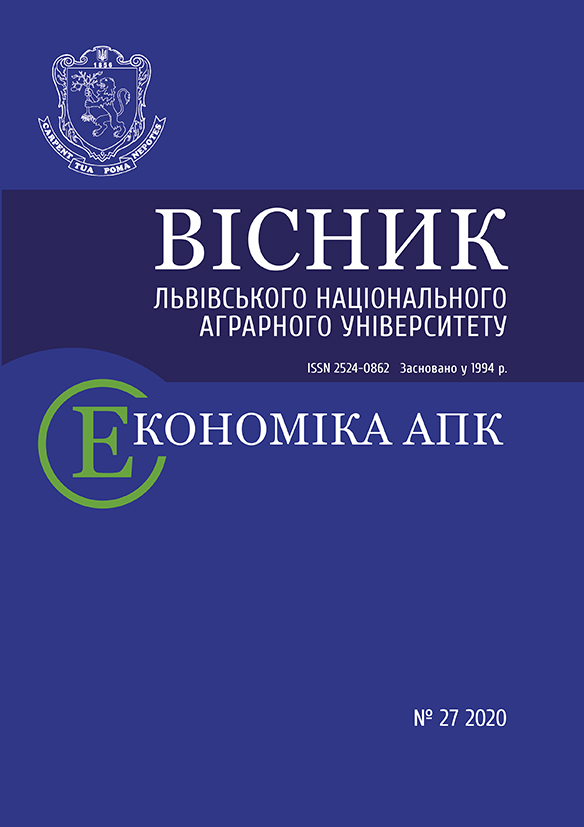Visnyk LNAU: Agronomy 2018 №22(2): 151-155
FEATURES OF GROWTH AND DEVELOPMENT OF PURE-BRED AND CROSS-BRED ANIMALS
Fedyaeva A., Post-graduate Student
Kharkiv State Veterinary Academy
https://doi.org/10.31734/agronomy2018.02.151
Annotation
The study of the features of the growth and development of pure-bred and cross-bred animals, as well as the measurements in some articles of the conformation of the experimental young stock, have great scientific and practical interest for scientists – breeders. Since, they enable them to study all the parameters of fattening animals and to examine the best genotypes in terms of growth and development. One of our goals has become the studying the peculiarities of the body structure of pure-bred and cross-bred animals having the same housing conditions.
Therefore, as for the study of other scientists, for the more accurate assessment of the pig's conformation, it is necessary to use the features of the body structure of animals, taking linear measurements at the age of 120 days and 180 days in accordance with generally accepted methods used in pig breeding.
In our experiment, it was found that animals of different genotypes differed considerably among themselves and as for practically all measurements there was a noticeable bias in the general development of young stock of animals of group IV (LW x T) and group VII (LW X L x T), where the terminal OptiMus Rattlerow Segers and Hypor Maxter pigs were used. They showed quite positive results regarding such measurements as: the circumference of the chest behind shoulder blades and the body length in group VII is 103,5 ± 0,36 cm, which is 8,8 % higher than that of the control group, which is a purebred LW x LW. The measurement of the body length of 112,6 ± 0,70 cm has еру animals of group VI and 111,4 ± 0,70 cm – the animals of group VII, and this is a percentage of 6,4 % and 5,3 more than in the control group. By the breast depth indicator, group IV – 33,7 ± 0,16 cm, group VII – 33,8 ± 0,23 cm. The bias in the height at the shoulder indicator was in the animals of group IV (LW x T) – 62,8 ± 0,47 cm.
It is worth noting that the pastern circumference indicator in all experimental groups of animals preponderated the control group where pure-blood genotypes were used (LW x LW).
According to our research at the age of 6 months, hybrid animals had the bias, namely, we note the following groups IV, V, VI, VII, which were evaluated not lower than II class according to assessment data.
Key words
growth, development, body structure, measurements, conformation
Full text
Link
- Kalinichenko G. I., Kislinska A. I. Indicators of growth and development of rearing stock of large white pigs. Agrarian Science Bulletin of the Black Sea region. 2012. Vol. 2, Sec. 1, Ed. 4. P. 81–85.
- Kovalenko T. S. Use of allometric functions for evaluation of the laws of pig growth. Technology of production and processing of livestock products: Collection of studies. Bila Tserkva: Bila Tserkva State Agrarian University, 2010. Ed. 4(77). P. 66–68.
- Collection of abstracts "Otherreferats" Rural, forestry and land use, Constitution and conformation of farm animals. URL: http://otherreferats.allbest.ru/agriculture/00027370_0.html (Last accessed: 25.01. 2018).
- Livestock Production Technology. Constitution and conformation of Farm Animals. URL: http://buklib.net/books/34127/ (Last accessed: 25.01. 2018)..
- Study guide "Constitution, Conformation and Ethology of Pigs" / prepared by: Komlatsky V. I. Doctor of Agriculture, professor; Velychko L. F. PhD (Agriculture), professor. Krasnodar, 2008. 59 p.
- Screbneva G. M., Chernyak S. Yu. Use of conformation indices in the evaluation of sows. Scientific bases of livestock development in the BSSR. Minsk: Urajay, 1991. Ed. 21. P. 64–67.



